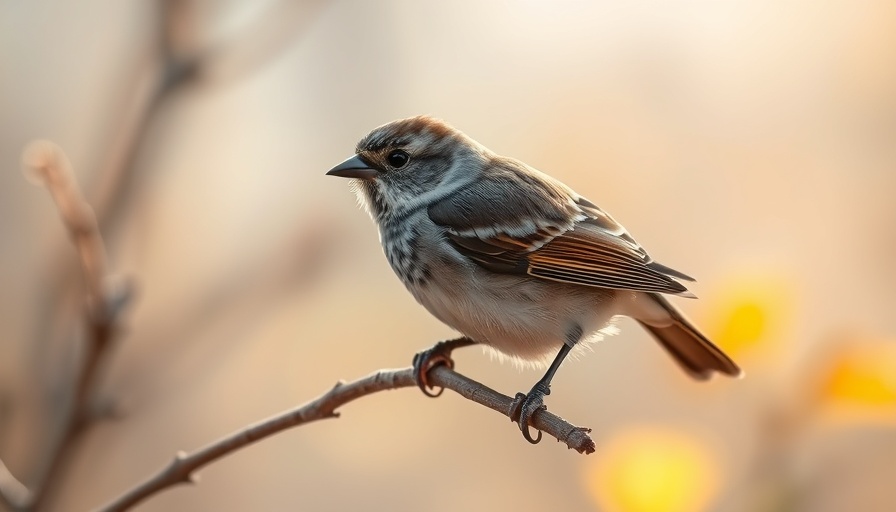
Discovering the Many Faces of Sparrows
When most people think of sparrows, they often picture small, unremarkable birds fluttering about. However, as avid birdwatchers will tell you, these "little brown jobs" hold a fascinating world of diversity and individuality in their relatively unassuming plumage. By honing your identification skills, you can unlock the secrets of the sparrow species in North America, an adventure that is not only rewarding but also enriching to your understanding of local wildlife.
Key Identifying Marks: More Than Meets the Eye
Contrary to the notion that sparrows blend into their environment, many species have distinct features that make them easier to identify. For instance, the Field Sparrow showcases a bright white ring surrounding its eye, whereas the Chipping Sparrow boasts a solid black streak across its facial region, known as an eye line. Pay attention to the subtle variations in their physical appearances - a Chipping Sparrow's reddish-brown crown and the crown stripes of the White-throated Sparrow can be telling signs.
The Singers of The Grasslands: Who Stands Out?
Another remarkable trait that varies among sparrow species is their vocalization. For example, the melodic songs produced by the Song Sparrow can be heard across various habitats, while the White-throated Sparrow offers a distinctive song reminiscent of the phrase, "Oh-sweet-Canada-Canada." Engaging with bird song can heighten your birdwatching experience as you learn to distinguish calls—a skill that not only aids in identification but also connects you to nature in a profound way.
Classification: Understanding Their Range
Across the vast terrains of North America, you might encounter around forty types of sparrows, each with unique behaviors and appearances. While many can be identified by their physical characteristics and calls, the recommended approach is to become familiar with five of the most commonly spotted species, including the American Tree, Swamp, and House Sparrows. This method allows you to develop foundational knowledge that can be built upon with experience.
Engaging With Nature: Practical Tips for Birdwatchers
If you're keen on attracting these feathered friends to your backyard, consider implementing a few strategies. Sparrows appreciate ground feeding, so scattering seeds like millet or sunflower seeds can lure them in. Additionally, creating an environment that resembles their natural habitat, particularly through the addition of brush piles and native vegetation, enhances your chances of observing sparrows up close.
Conclusion: Sparrows and Their Subtle Elegance
The world of sparrows is much more intricate than it first appears. Embracing the subtleties of their appearance and behavior can transform simple birdwatching into a rewarding expedition. Next time you're out in nature, take a moment to look closely at these "little brown jobs" and enjoy the unique markings that make each species special. Start your journey of identification today and enhance your connection with the avian world around you!
 Add Row
Add Row  Add
Add 




Write A Comment